order
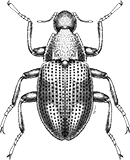
Coleoptera
“Adult Beetles”

Coleoptera
“Larval Beetles”

Diptera
“True Flies”

Ephemeroptera
“Mayflies”
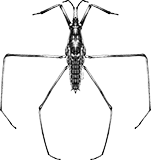
Hemiptera
“True Bugs”

Lepidoptera
“Aquatic Caterpillars, Snout Moths”

Megaloptera
“Alderflies, Dobsonflies, and Fishflies”
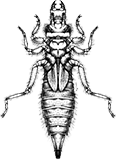
Odonata
“Dragonflies and Damselflies”
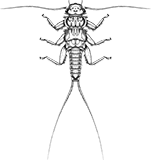
Plecoptera
“Stoneflies”
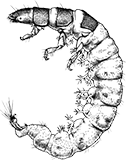
Trichoptera
“Caddisflies”
family
Leptoceridae
genus
Ceraclea
“Long-horned Caddisflies”
Genus Overview
Formerly Athripsodes (in part). There are about 36 North American species. The larvae tend to be rather short and wide, especially at the first abdominal segment, and this is reflected in the shapes of their cases as well. The case is made of fine sand grains or plant materials and tends to be wide at the opening and narrower at the posterior end. It sometimes has flanges or wing-like expansions at the sides and over the head, allowing the case to sit on top of loose sand without sinking, much like how snowshoes prevent sinking into deep snow, or to present a low profile on rocks in fast current. Some species are predators of freshwater sponges; these species have silken cases embedded with sponge spicules. Others are herbivores and detritivores. These larvae can be found in lentic or lotic habitats depending on the species. Larvae of this group can be identified by a distinctive pair of dark, reverse-parenthesis-like bars on the mesonotum (concave laterally).
Characteristics
POLLUTION TOLERANCE
Southeast: 0 - 6.4
Upper Midwest: 3
Midwest: 3.1
Mid-Atlantic: 3
0 = least tolerant, 10 = most tolerant
FEEDING HABITS
Collector / Gatherer
Engulfer / Predator
Shredder / Herbivore
Engulfer / Predator
Shredder / Herbivore
MOVEMENT
Climber
Sprawler
Sprawler
DISTRIBUTION
Widespread (east of the Rocky Mtns.)
HABITAT
Lentic-littoral
Lotic-depositional
Lotic-erosional
Lotic-depositional
Lotic-erosional
Diagnostic Characters
order
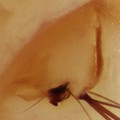
Prolegs With Single Hook
family
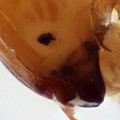
"Long" Antenna
genus
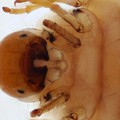
Maxillary palpi slightly extended beyond the labrum
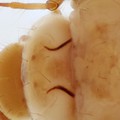
Mesonotum with a pair of dark, curved bars
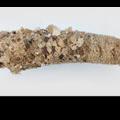
Sandy wide rim case
+ Expanded Character List
Order:
Larvae: Wings/wing pads absent. Eye spots present, but compound eyes absent. Antennae usually small, inconspicuous. Three pairs of segmented legs present on thorax. Pair of anal prolegs, each with single hook, located on last abdominal segment. Larvae can be free-living, in silken retreats attached to substrate, or in usually-portable tubes or cases made of sand, rocks, or plant material.
Family:
Antennae usually long for caddisflies, at least 6 times as long as thick. Mesonotum light in color, except sometimes with pair of dark curved lines; these lines present in species with short antennae. Metanotum membranous. Larvae constructing portable tube-shaped cases of various materials and shapes.
Genus:
Maxillary palps extend little past labrum. Mandibles short and wide, with teeth clustered near apices. Mesonotum with pair of dark, reverse parenthesis (concave laterally); abdomen broad basally but tapering toward apex. Mesothoracic legs with slightly curved and slender tarsal claws. Tarsi straight. Anal opening sometimes with patches of spines or hair. Abdominal gills clustered in groups of 2 or more. Cases of various shapes and materials, sometimes with spicules and pieces of freshwater sponges.
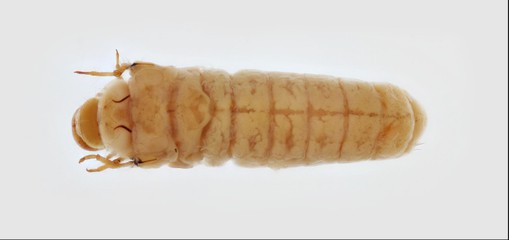
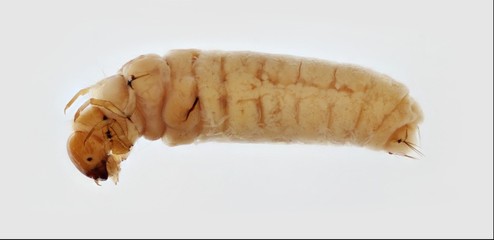
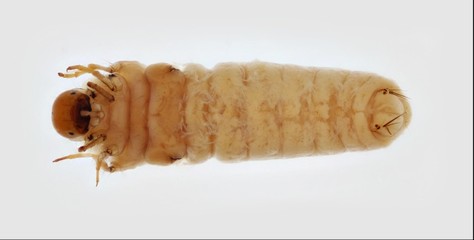
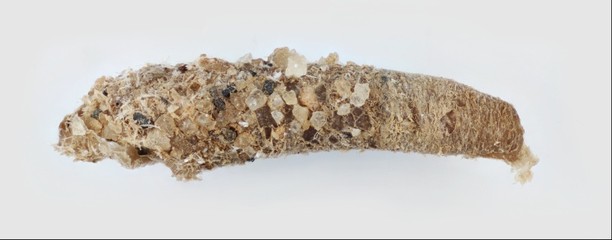
Dorsal
Lateral
Ventral
Case




